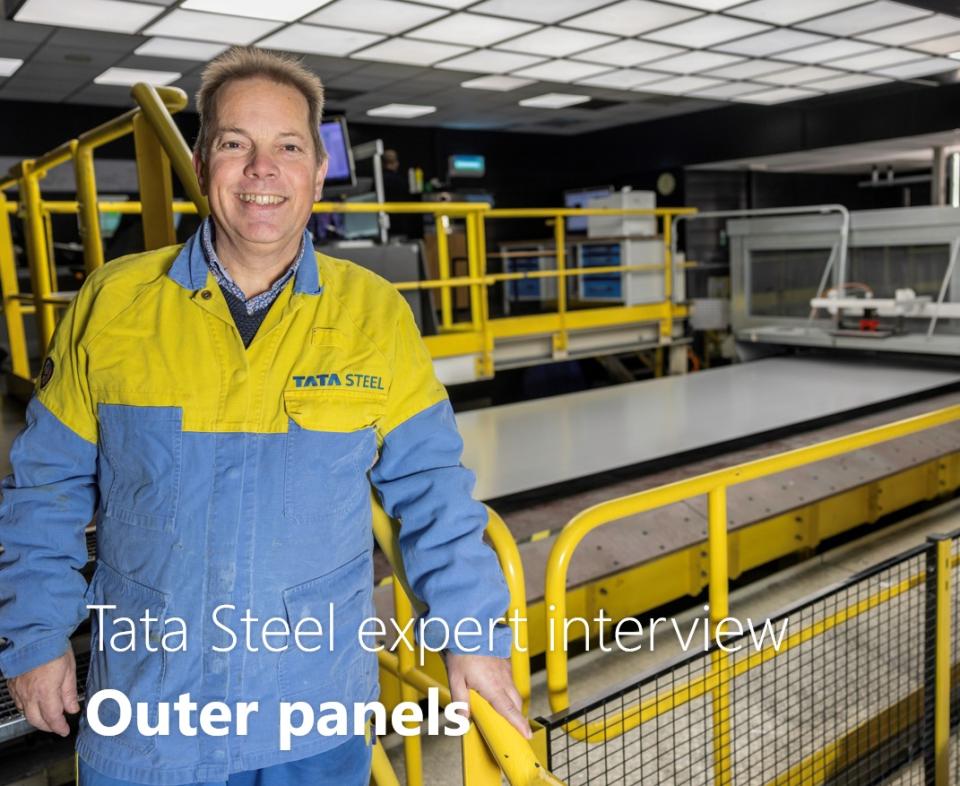Meet Bart Van Veldhuizen, New Product Manager at Tata Steel Nederland. In this interview, Bart delves into the challenges of developing value-added products for the automotive industry and discusses emerging trends.
What do you do in the field of Outer Panels?
I am a product developer specialised in galvanised steel for automotive exterior panels. When addressing outer panels, my constant curiosity revolves around understanding our customers' needs and ensuring that the products we develop genuinely add value to their requirements.
Collaborating closely with our marketing team, I contribute to the business case and engage with my colleagues in R&D and production to formulate new concepts and test our ideas. If an idea works out, the challenge of scaling up begins.
It is crucial to note that while a new product might excel in a smaller A4 format, translating its success to a coil of approximately 4,000 square metres poses unique challenges. This often necessitates adjustments in our manufacturing processes to ensure the consistent and robust production of the new product at scale, while maintaining quality and efficiency across the board.
What do you think our customers need?
For outer panels, there remains a consistent demand for improved paint appearance. Both car manufacturers and drivers value this aspect, and the choice of steel significantly influences the final result. Presently, our standout offering in the market is Serica FLO, a leading product that markedly enhances the paint appearance of a car.
For all developments in the car industry, sustainability is key. Our customers aspire to minimise their environmental impact by adopting more sustainable practices in both product development and manufacturing processes. Considerations such as reducing paint thickness to minimise usage have become pivotal. However with thinner paint layers, you have to approach corrosion protection differently. Similarly, initiatives to lower the heat in curing furnaces, affects the hardening process of the steel substrate. It is our responsibility to understand the implications on the steel we produce and make necessary adaptations.
Furthermore, our role extends to closely monitoring how our products integrate into our customers' processes. Particularly because higher production speeds and improved yields also have a big impact on their sustainability targets. For example, our innovative booster lubricant, Prime Lubrication Treatment, stands as a testament to our commitment. This product effectively reduces tool pollution and galling during stamping, leading to enhanced yields and minimal wastage of materials, aligning seamlessly with our clients' sustainability objectives.
What are trends that customers will find important in 10 years’ time?
Looking ahead to the next 10 to 15 years, I am confident that steel will remain the most crucial material for outer panels. Despite the promises of weight reduction from alternative materials, steel possesses significant lightweighting potential, and its cost/value performance for customers is nearly unbeatable.
I anticipate that, even a decade from now, improved surface quality will continue to be a vital consideration for our customers. Hence, we are actively expanding the application scope of Serica FLO. Currently, the achievable effect depends on the paint system used. If the paint system is not effective, it can overshadow the positive impact our steel substrate can have on paint surface quality. Our objective is to improve paint appearance across all types of paint systems.
In pursuit of sustainability targets, our customers aim to lower the temperature of their curing furnaces. Currently, the entire body-in-white undergoes baking at approximately 180 degrees Celsius for half an hour to ensure complete curing of paint layers. This heat treatment also contributes to the bake hardening process for our steel substrate, making it even stronger. Therefore, if our customers reduce the temperature from, for example, 180 to 130 degrees Celsius, it can also decrease the strength increase of our steel. This necessitates the development of new steel concepts to ensure the required performance in the future.
What are you really good at as Tata Steel Nederland?
In my opinion, at Tata Steel, we excel in producing very wide steel for formable exterior parts. Our mills are specifically designed for formable steels, providing the necessary width, expertise in metallurgy in the hot mill, precise chemistry control and low-carbon content. The production of exceptionally pure steels is deeply rooted in our expertise, backed by a long history of 30, maybe even 50 years of experience in steel for outer panels. Therefore, I can confidently say that we understand our business well.
Mastering steel for outer panels is like competing in our industry's Champions League. In this demanding arena, we as a team constantly demonstrate commitment to excellence and strive for automotive perfection.


































































































































































































































